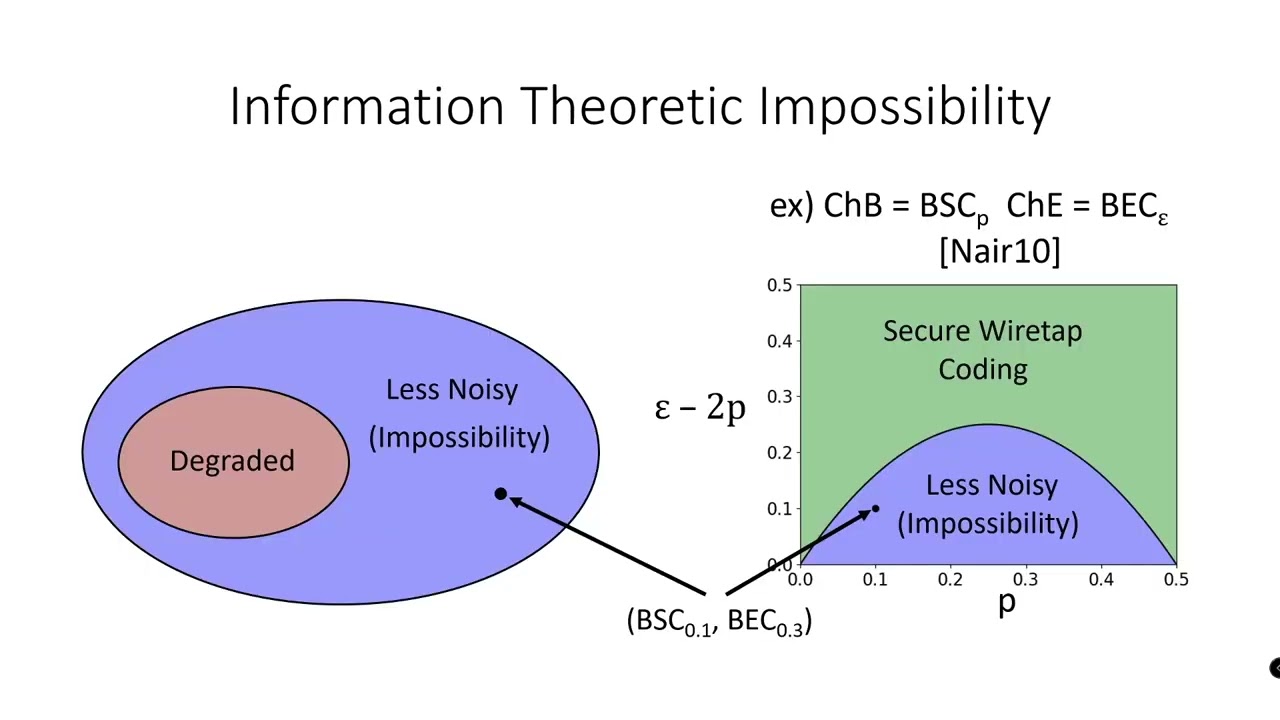Welcome to the resource topic for 2022/343
Title:
Beyond the Csiszár-Körner Bound: Best-Possible Wiretap Coding via Obfuscation
Authors: Yuval Ishai, Alexis Korb, Paul Lou, Amit Sahai
Abstract:A wiretap coding scheme (Wyner, Bell Syst. Tech. J. 1975) enables Alice to reliably communicate a message m to an honest Bob by sending an encoding c over a noisy channel chB, while at the same time hiding m from Eve who receives c over another noisy channel chE. Wiretap coding is clearly impossible when chB is a degraded version of chE, in the sense that the output of chB can be simulated using only the output of chE. A classic work of Csiszár and Körner (IEEE Trans. Inf. Theory, 1978) shows that the converse does not hold. This follows from their full characterization of the channel pairs (chB, chE) that enable information-theoretic wiretap coding. In this work, we show that in fact the converse does hold when considering computational security; that is, wiretap coding against a computationally bounded Eve is possible if and only if chB is not a degraded version of chE. Our construction assumes the existence of virtual black-box (VBB) obfuscation of specific classes of ``evasive’’ functions that generalize fuzzy point functions, and can be heuristically instantiated using indistinguishability obfuscation. Finally, our solution has the appealing feature of being universal in the sense that Alice’s algorithm depends only on chB and not on chE.
ePrint: https://eprint.iacr.org/2022/343
Talk: https://www.youtube.com/watch?v=DQBLUlNdSKY
Slides: https://iacr.org/submit/files/slides/2022/crypto/crypto2022/237/slides.pptx
See all topics related to this paper.
Feel free to post resources that are related to this paper below.
Example resources include: implementations, explanation materials, talks, slides, links to previous discussions on other websites.
For more information, see the rules for Resource Topics .
